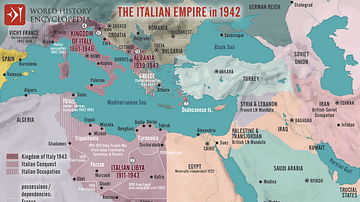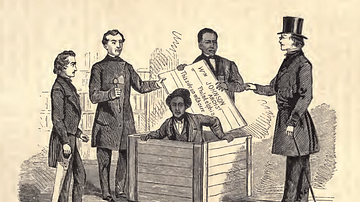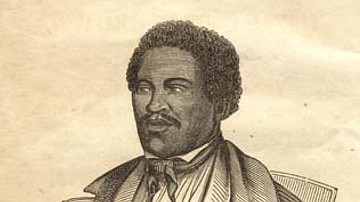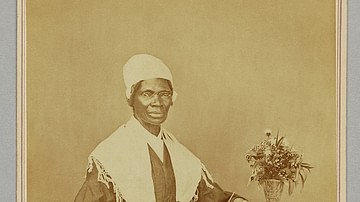Latest Content
Featured Definition

Definition
Crucifixion
Crucifixion as a punishment was practiced by several ancient cultures, but most notably adopted by the Roman Republic and later Roman Empire. Crucifixion...
Featured Image

Image
The Italian Empire in 1942
This map illustrates the extent of the Italian Colonial Empire, established during the era of New Imperialism as Italy sought to assert itself alongside...
Free for the World, Supported by You
World History Encyclopedia is a non-profit organization. Please support free history education for millions of learners worldwide for only $5 per month by becoming a member. Thank you!
World History Encyclopedia is a non-profit organization. Please support free history education for millions of learners worldwide for only $5 per month by becoming a member. Thank you!
Become a Member Donate
Article
Henry Box Brown on Slavery in the United States
The Narrative of the Life of Henry Box Brown (1851) is the autobiography of Henry Box Brown (l. c. 1815-1897), who became the most famous fugitive slave...

Article
The Red Army in WWII
The Red Army of the USSR began the Second World War (1939-45) with a series of shocking defeats, but from late 1942, it rallied and held on to key cities...

Definition
Henry Box Brown - The Man Who Mailed Himself to Freedom
Henry Box Brown (l. c. 1815-1897) was an enslaved African American who became famous as "the man who mailed himself to freedom" after he had himself...

Article
4 Lesser-Known Elizabethan Playwrights and Poets
The Elizabethan era is often regarded as a golden age for English culture, language, and literature. Though William Shakespeare, Christopher Marlowe...

Article
Sojourner Truth's Escape from Slavery
Sojourner Truth's Escape from Slavery comes from the Narrative of Sojourner Truth, an account of the famous abolitionist's life as given to her friend...

Article
Hegra and Jabal Ikmah, Saudia Arabia
Although 30,000 archaeological sites have been identified in the AlUla area of Saudi Arabia, only 8 are currently open to visitors: Jabal Ikmah, which...

Definition
Sojourner Truth
Sojourner Truth (l. c. 1797-1883) was an African American abolitionist, women's suffrage advocate, and civil rights activist who famously "walked away"...

Article
Battle of Stalingrad - The Destruction of Germany's Sixth Army
The Battle of Stalingrad (now Volgograd, July 1942 to February 1943) was an attempt by Adolf Hitler (1889-1945) to control the USSR's access to the...

Definition
Harriet Jacobs
Harriet Jacobs (l. c. 1813-1897) was a former slave, abolitionist, and author of Incidents in the Life of a Slave Girl (1861), her autobiography, describing...

Article
Italian Colonialism in Eritrea
Eritrea, located on the Red Sea coast of the Horn of Africa, was the ‘firstborn’ colony of Italy. The potential of a trade centre and naval base at...

Article
Education in Roman Spain
There was no compulsory state education for children in any of the western provinces of the Roman Empire. The primary sources are sparse when it comes...

Article
Battle of Edington
The Battle of Edington, fought in May 878 in southwest England, saw Alfred the Great, King of Wessex (r. 871-899), win a decisive victory over the Viking...

Article
Fear of Insurrection
Fear of Insurrection comes from Incidents in the Life of a Slave Girl (1861) by Harriet Jacobs (l. c. 1813-1897) describing the reaction of the White...

Definition
Titus Andronicus
Titus Andronicus is the earliest tragedy by William Shakespeare (l. c.1564-1616), probably written sometime between 1589 and 1593, and first performed...

Article
Battle of Moscow in 1941-2 - The USSR's First Victory
The Battle of Moscow (Oct 41 to Jan 42) was Germany's first major land defeat in the Second World War (1939-45). Although Axis panzer divisions reached...

Article
Notes on the State of Virginia
Notes on the State of Virginia (1785) is the only full-length work by Thomas Jefferson (l. 1743-1826) published in his lifetime and was written in response...